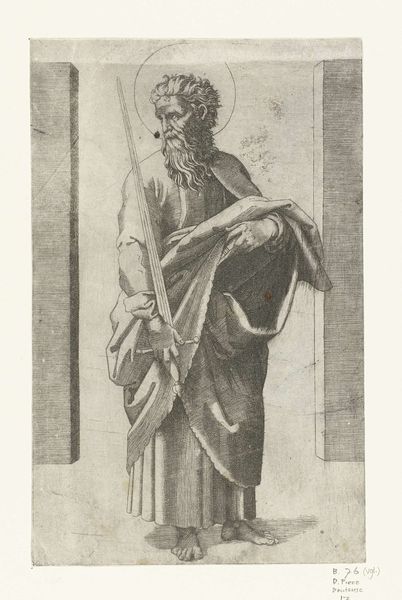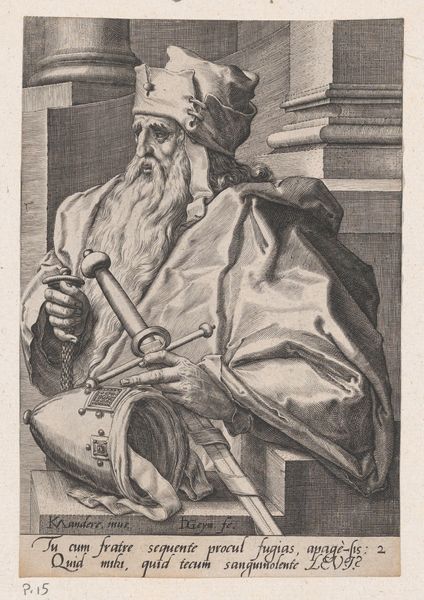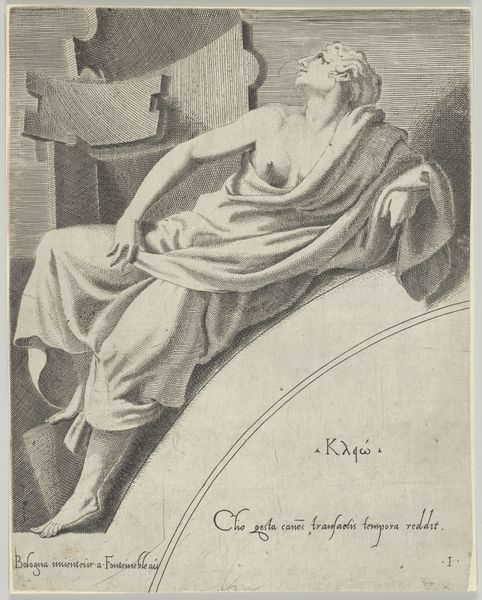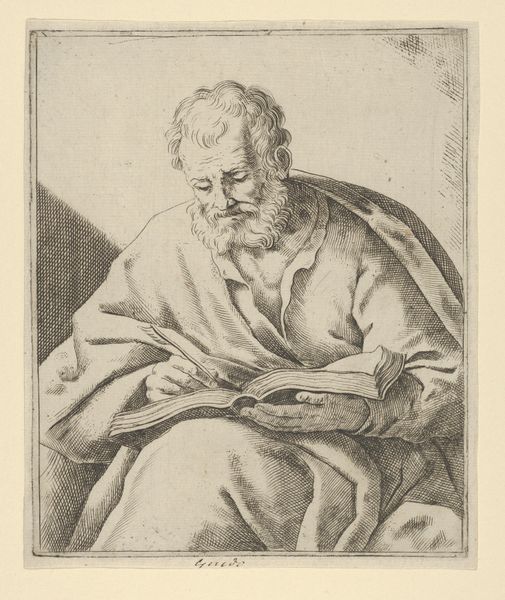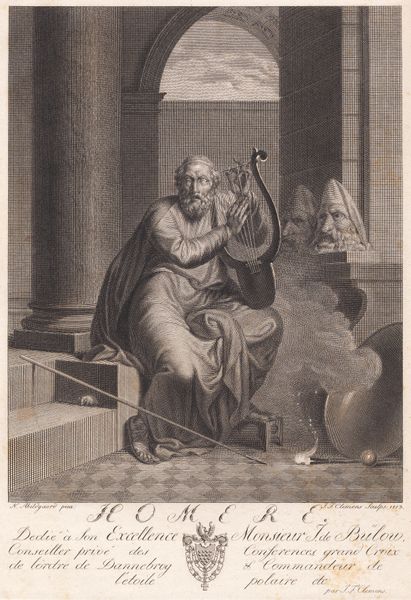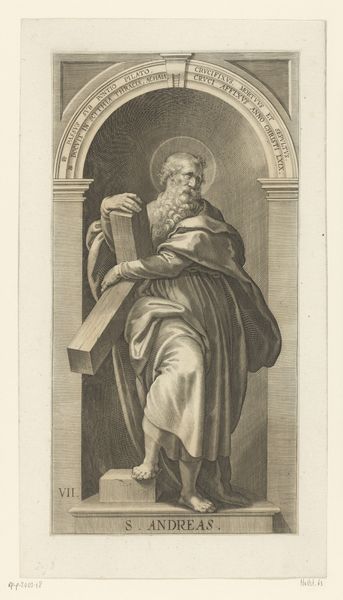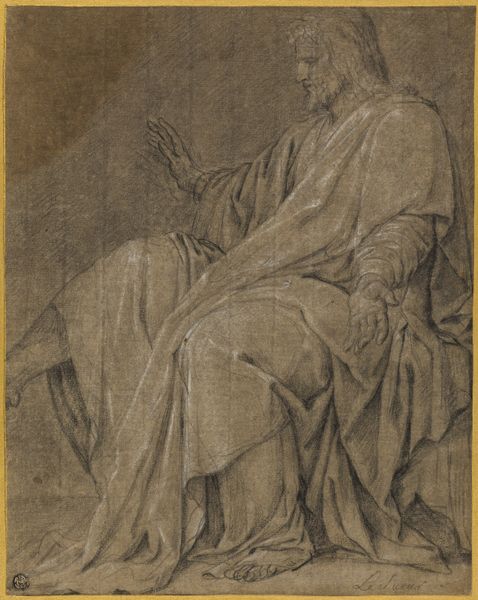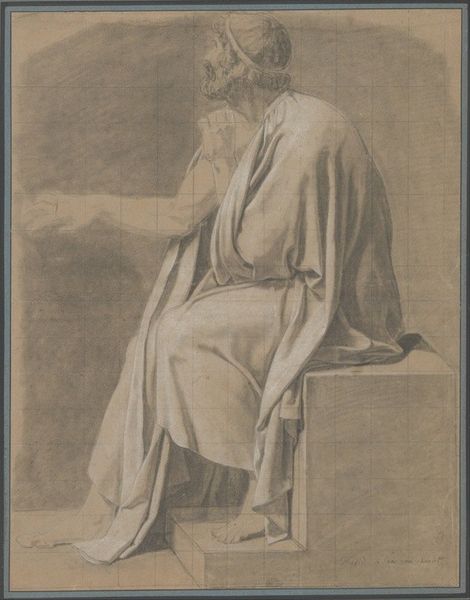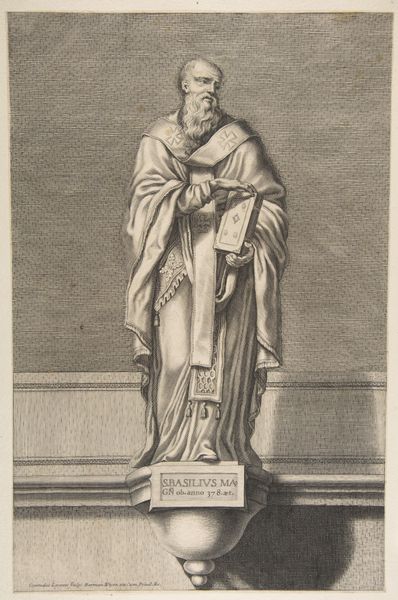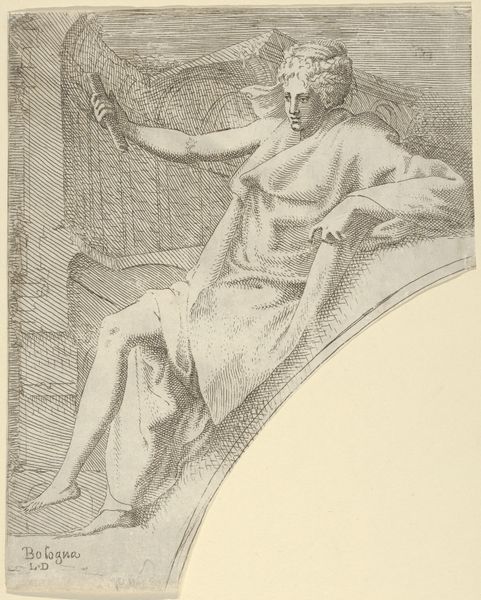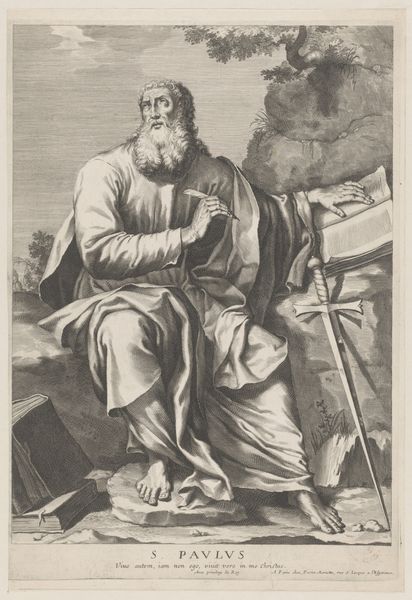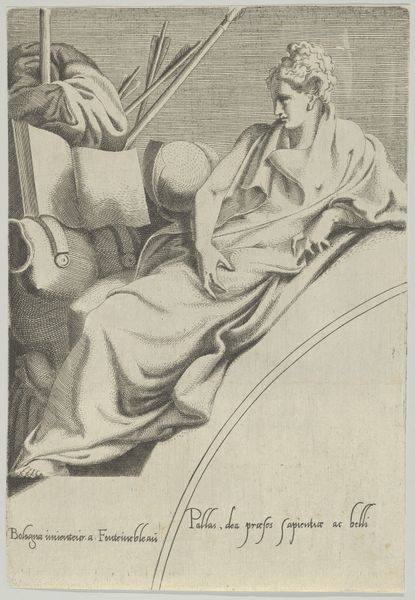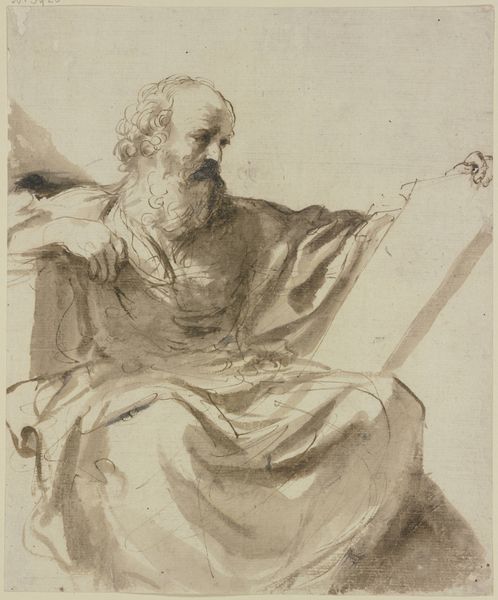
drawing, print, engraving
#
drawing
# print
#
11_renaissance
#
italian-renaissance
#
nude
#
engraving
Dimensions: Sheet (trimmed): 8 11/16 × 6 7/8 in. (22.1 × 17.4 cm)
Copyright: Public Domain
Léon Davent created this print of Clio in the mid-16th century, using the intaglio process. That means the image was incised into a metal plate, probably copper, with a tool called a burin. Look closely, and you'll see that the entire image is built up from tiny, closely-spaced lines. This was a labor-intensive process, demanding both technical skill and patience. The density of the lines creates areas of tone, giving form to Clio's draped figure and the objects around her. Consider how this meticulous, almost obsessive, approach to making influenced the image. The act of engraving transforms a mythological subject into something tangible and detailed. It also speaks to the value placed on skilled handwork during the Renaissance. This wasn’t just about art; it was a demonstration of mastery, a testament to the power of human skill. By understanding Davent’s process, we can appreciate how craft and artistic expression were deeply intertwined.
Comments
No comments
Be the first to comment and join the conversation on the ultimate creative platform.
